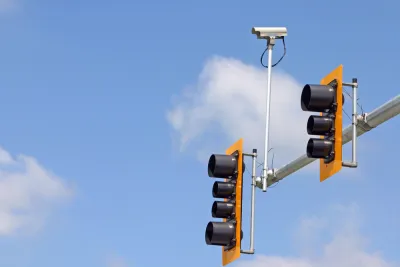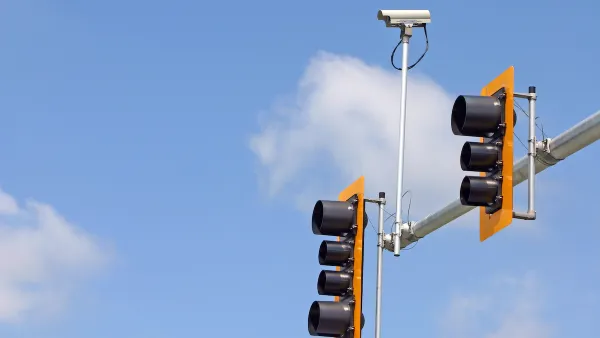Although controversial in the United States, when deployed thoughtfully, automated enforcement can save lives and make roads safer for all users.

A new study assesses attitudes toward automated traffic enforcement and makes recommendations for using traffic cameras to make streets safer and more equitable. As Kea Wilson explains in Streetsblog, the researchers looked at how people perceive traffic cameras and how messaging can alter their views.
In the study, 60 percent of respondents believed that automated enforcement is “mostly about raising revenue,” reinforcing the belief that traffic cameras serve as a cash grab for cities. Yet “Despite evidence that traffic enforcement in general is being used to line city coffers, automated enforcement specifically isn’t a very good cash cow — because local motorists quickly warn each other of the location of new stationary cameras and drive more carefully when they’re nearby.”
This leads to the first recommendation: using good messaging to clarify the role of traffic cameras and debunk myths. Other recommendations include careful camera placement that doesn’t feel like a ‘gotcha,’ but rather uses data to place cameras in areas known to be unsafe; setting appropriate fines to ensure the program doesn’t perpetuate inequity; and spending the revenue on “self-enforcing streets,” which the authors define as infrastructure that makes it difficult to speed, for example.
On how not to spend speed camera revenue, the authors point to “extractive contracts with private firms that take home a hefty percentage of fines and sometimes a bonus per violation, creating an incentive to keep the dangerous drivers rolling in a way that charging cities a flat fee doesn’t.”
FULL STORY: Four Ways To Build A Better Automated Enforcement Program

National Parks Layoffs Will Cause Communities to Lose Billions
Thousands of essential park workers were laid off this week, just before the busy spring break season.

Retro-silient?: America’s First “Eco-burb,” The Woodlands Turns 50
A master-planned community north of Houston offers lessons on green infrastructure and resilient design, but falls short of its founder’s lofty affordability and walkability goals.

Delivering for America Plan Will Downgrade Mail Service in at Least 49.5 Percent of Zip Codes
Republican and Democrat lawmakers criticize the plan for its disproportionate negative impact on rural communities.

Test News Post 1
This is a summary

Test News Headline 46
Test for the image on the front page.

Balancing Bombs and Butterflies: How the National Guard Protects a Rare Species
The National Guard at Fort Indiantown Gap uses GIS technology and land management strategies to balance military training with conservation efforts, ensuring the survival of the rare eastern regal fritillary butterfly.
Urban Design for Planners 1: Software Tools
This six-course series explores essential urban design concepts using open source software and equips planners with the tools they need to participate fully in the urban design process.
Planning for Universal Design
Learn the tools for implementing Universal Design in planning regulations.
EMC Planning Group, Inc.
Planetizen
Planetizen
Mpact (formerly Rail~Volution)
Great Falls Development Authority, Inc.
HUDs Office of Policy Development and Research
NYU Wagner Graduate School of Public Service





























